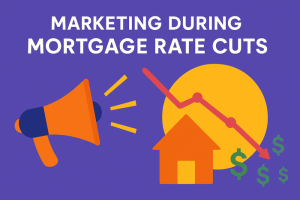Summary
This article explores the essential elements of a successful mortgage website, including clear navigation, strong branding, and mobile responsiveness. It also emphasizes the importance of fast load times and compelling content to engage users. By focusing on these features, mortgage professionals can create a website that attracts and retains clients.
In our ever growing “online first” society, your website is most likely going to be the first impression a potential client has of your team. It will determine whether or not they consider you an expert in your industry. Unfortunately, too many mortgage brokerages have built a website that ends up being not much more than an online brochure. Lacking value, these sites never compel leads to enter their pipeline and as a result, their business suffers. Today we want to share with you a strategy for creating the perfect mortgage website to help you grow.
The Key Elements Of A Great Mortgage Website
A great mortgage website is going to be informative and value-added for your prospective client. It will answer the questions that are most important to them. Establish you and your brokerage as the thought leader in the mortgage industry. As well as compel them to want to give you their information so they can discuss their home financing options with you.
1. Use The Right Copy & Framing

The truth is that too many mortgage websites position themselves and their services as the hero in the loan scenario. Psychologically this turns potential clients off. You have to remember that by nature, we are all a little selfish. When putting ourselves in the shoes of a character that needs a home loan, we don’t want someone else to be the hero in the story. We want to be the hero. This means that you as the mortgage broker are the guide. You need to take this into consideration when planning the content on your site.
This is a very common feature in websites in almost every industry. It’s called a storytelling framework. The thumbnail sketch of this framework is:
- Our hero is facing a problem
- Hero meets a guide that gives them the steps they need to follow for success
- Guide calls the hero to action
- Guide tells the hero what they have to gain by being successful
- The guide also demonstrates what the hero has to lose if they don’t act
To get started on this element of your website there is a great free tool you can use online, created by Donald Miller called the storybrand brandscript.
The shift from hero to guide is a game changer for mortgage companies. It sets you apart from the crowd and establishes you as the expert in your marketplace. For instance:
Many mortgage websites use phrases like:
- This year we will assist almost 700 customers satisfying their mortgage needs!
- We are a full service mortgage brokerage
- Click here to prequalify for your loan
Instead, frame the statements like this:
- Stress free Mortgages that fit your exact needs – We’ve helped over 700 customers in the Silicon Valley achieve their home financing needs. We can help you too!
- We’ll help you navigate the many mortgage options out there to find the one that best suits your needs
- We break down the home loan process, help you find the loan program that suits your needs best and will get you on the path to buying your dream home
2. Be Voice And Mobile Search Ready

The number of people using voice activated search is increasing rapidly. According to Quora Creative, 40% of adults now use mobile voice search at least once daily
What that means is they pick up their mobile phone and speak into it. Think: “mortgage broker near me” or “best mortgage broker in Arlington” or “new home loan specialists in Milwaukee”.
The best place to start is with Google Keyword planner see what types of keywords people are searching in your local area similar to the ones above. Then take the phrases you find are searched most often and incorporate them naturally into the content on the pages throughout your website. Keep in mind to make these as hyper local as possible, local results show up way more often in voice searches.
By optimizing the content of your website you can position it to show up for these types of typical voice driven mobile web searches. This will help you rank for those terms and end up in more searches that prospective clients are making.
3. Provide Social Proof

This may seem like a no-brainer, but you would not believe how many mortgage brokers choose not to put client testimonials in an easy to find spot on their homepage. This is a giant mistake. Client testimonials provide social proof. It’s a third-party that is reaffirming the things you are telling your prospective clients throughout your website. It adds instant credibility.
According to Optin Monster, social proof can increase website conversions by up to 15%. So for every 100 website visitors that come to your Mortgage Brokerage’s website, that’s an additional 15 leads that your team is getting in their pipeline. Those are not small numbers.
Whether you choose to build your own website, or use a pre-built website from a website provider, you need to make sure there is an option you can use to post your online reviews. You don’t want to have to do this manually. First of all it requires effort on your part and will likely lead to stale reviews being shown on your site. Secondly, to get the most out of your reviews, you want to make sure these reviews are verified third party reviews. Your website platform should offer plugins that allow you to easily pull in reviews from places like Facebook, Yelp, Zillow and Google My Business, directly into your website.
4. Be Easy To Contact

This is another one of those things that should seem like a no-brainer, but many brokerages just get this wrong. You have to make it stupid simple for prospective borrowers to get in touch with you to discuss their needs. If they sense it’s even slightly difficult to get in touch with you, prospective clients are likely to just move onto the next site because when we are online, our patience is at an all-time low. Even more, everyone (especially across age group demographics) wants to communicate with someone in a different way. For instance, someone in their 50’s may want to pick up a phone and have a one-to-one conversation with a loan officer. Millennials on the other hand are much more comfortable with jumping on an online chat platform to discuss their needs with a loan officer. Offering a contact option for everyone’s preference is important.
First off, you want to make sure your phone number is at the top right of every page on your website. Next, you want to make sure that even with that phone number prominently displayed there are plenty of other ways for people to get in touch with you. Include features such as a chat widget on your site that can handle chat on multiple platforms (e.g. on the site, via sms, Facebook Messenger, Whatsapp, etc.). On your contact page you also want to have an easy to fill out “contact us” form that prospective borrowers can enter their info into to get in touch with you and begin discussing their needs.
Similarly to an easy way to display social proof, web platforms generally have dozens of options when it comes to these features and pre-built website packages should for sure have a plan in place for these features as well.
5. Utilize Landing Pages & Lead Magnets

Again, it’s important to remember that the best Mortgage Websites are informative, establish you as a thought leader and generate leads. To generate leads, you are going to have lots of lead magnets that lead to landing pages throughout your website.
For instance, if you devote a portion of your site to first time home buyers, you will need to create lead magnets that will get first time home buyers to want to click to go to a landing page and give you their information. The creation of these pages should follow the hero’s journey we talked about earlier in this article. Taking into account the challenges your first time home buyers are facing, create a banner or section on your site that addresses that challenge and describes how you are positioned to guide them through solving that challenge. Then, give them a call to action to “click the button” to get some valuable piece of information that will get them to their end goal. For instance, a great item of value for a first time home buyer might be a checklist of 10 things they need to do before they start the search for their first home.
When you design your landing page, you also want to consider the hero’s journey, but you want to really drive home your authority and how you can get the prospect to their goal in a successful way. The best way to do this is to give specific summaries of what they will receive in that item of value if they fill out the lead form on the page and submit their information. To do this, it can be as simple as giving the prospect a bulleted list of what they’ll get for submitting their information. If you want to build extra authority and rapport with a prospect, a video embedded in the landing page that describes what they are getting by submitting their information is even better.
It’s important to make sure that you can build lead magnets and landing pages in an on-demand fashion on your website, enabling you to continually build out new items of value that are going to get prospective borrowers to want to give you their information. These lead magnets and landing pages will also give you a great opportunity to increase your search engine rankings.
The Perfect Mortgage Website Will Grow Your Mortgage Business
When it comes to driving people online to your website and getting them to jump into your pipeline so your team can nurture and convert them into clients, you have to have more than simply an “online brochure” website. Taking the steps outlined in this article will help you build an information rich website that will establish your brokerage as the experts in your marketplace, driving leads to your team and more business to your bottom line.
Key Takeaways
- Design a user-friendly website with clear calls to action.
A seamless, intuitive design encourages visitors to take the next step in the mortgage process.
- Incorporate client testimonials and case studies.
Real-life stories and reviews build trust and demonstrate your expertise.
- Optimize your site for mobile users.
A mobile-optimized site ensures that potential clients can engage with your content from any device.
Commonly Asked Questions
- What makes a mortgage website great?
A great mortgage website is user-friendly, informative, and optimized for both desktop and mobile devices. It provides a clear navigation path, offers valuable resources, and includes interactive features such as loan calculators, making it easy for users to find the information they need.
- How does a strong website design influence a lender’s business?
A strong website design builds credibility and trust with potential clients. By offering clear information, easy navigation, and a professional aesthetic, lenders can convert more website visitors into leads and clients while improving their online presence.
- What role does content play in a mortgage website’s success?
Quality content is critical for engaging visitors and improving SEO rankings. Mortgage websites should include informative content, such as blogs, educational articles, and guides, to address customer concerns and establish the lender as an expert in the field.
- Why is SEO important for mortgage websites?
SEO is crucial for driving organic traffic to a mortgage website. By optimizing for relevant keywords, creating high-quality content, and improving site speed, lenders can increase their visibility on search engines and attract more potential clients.





